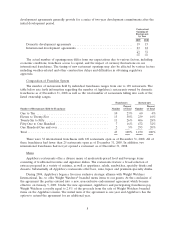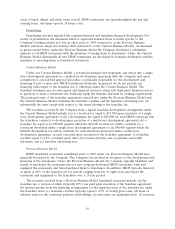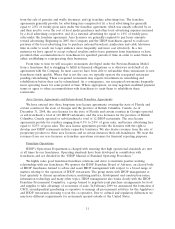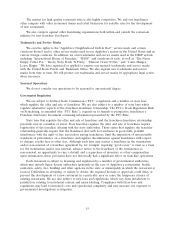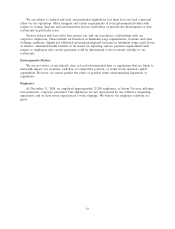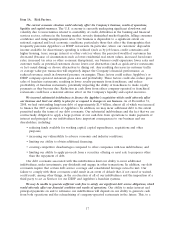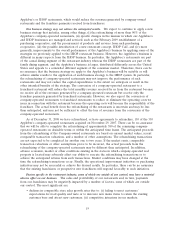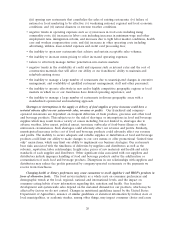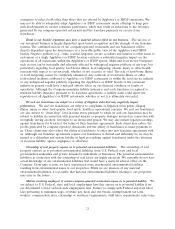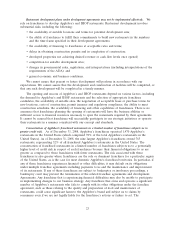IHOP 2008 Annual Report Download - page 27
Download and view the complete annual report
Please find page 27 of the 2008 IHOP annual report below. You can navigate through the pages in the report by either clicking on the pages listed below, or by using the keyword search tool below to find specific information within the annual report.
total number committed to be developed due to various factors including weather-related delays, other
construction delays, difficulties in obtaining timely regulatory approvals and various economic factors.
Composition of Franchise System
The number of restaurants held by individual franchisees ranges from one to 53 restaurants. The
table below sets forth information regarding the number of IHOP restaurants owned by domestic
franchisees as of December 31, 2008 as well as the total number of restaurants falling into each of the
listed ranges.
Franchisees Restaurants
Number of Restaurants Percent of Percent of
Held by Franchisee Number Total Number Total
One............................................ 168 47.6% 168 13.7%
Two to Five ...................................... 132 37.4% 369 30.1%
Six to Ten ....................................... 30 8.5% 221 18.0%
Eleven to Fifteen .................................. 10 2.8% 127 10.4%
Sixteen and over .................................. 13 3.7% 340 27.8%
Total ........................................... 353 100.0% 1,225 100.0%
Menu
The IHOP menu offers a large selection of high-quality, moderately priced products designed to
appeal to a broad base of customers. These include a wide variety of pancakes, waffles, omelets and
breakfast specialties, chicken, steak, sandwiches, salads and lunch and dinner specialties. Most IHOP
restaurants offer special items for children and seniors at reduced prices. In recognition of local tastes,
IHOP restaurants typically offer regional specialties that complement the IHOP core menu. Our
Product Research and Development Department works together with franchisees and our Marketing
Department to develop new menu and promotion ideas. These new items are thoroughly evaluated in
our test kitchen and in limited regional tests, which include both operational tests and selected media
supported tests, before being introduced throughout the system through core menu updates. The
purpose of adding new items and improving existing items is to broaden the appeal of our food to our
guests and continually give them new reasons to return to our restaurants. These efforts are based on
consumer research, feedback and benchmarking, which help to identify opportunities to improve
existing items as well as for developing new items.
Marketing and Advertising
IHOP franchisees and company-operated restaurants contribute a percentage of their sales to local
advertising cooperatives and a national advertising fund. The franchise agreements provide for
advertising fees comprised of (i) a local advertising fee equal to 2.0% of weekly gross sales, which is
used to cover the cost of local media purchases and (ii) a national advertising fee equal to 1.0% of
weekly gross sales. Area licensees are generally required to pay lesser amounts toward advertising.
The local advertising cooperatives have historically used the local advertising fees to purchase
television advertising time, radio advertising time and place advertisements in printed media or direct
mail locally. In addition, we encourage other local marketing by our franchisees. These marketing
programs often include discount coupons and specials aimed at increasing guest traffic and encouraging
repeat business. The national marketing fund is primarily used for the creation of advertising and to
defray certain expenses associated with our marketing and advertising functions.
Beginning in 2005, we and the franchisees have reallocated a portion of the local advertising fees
to national media in order to take advantage of buying efficiencies associated with national broadcast,
13







